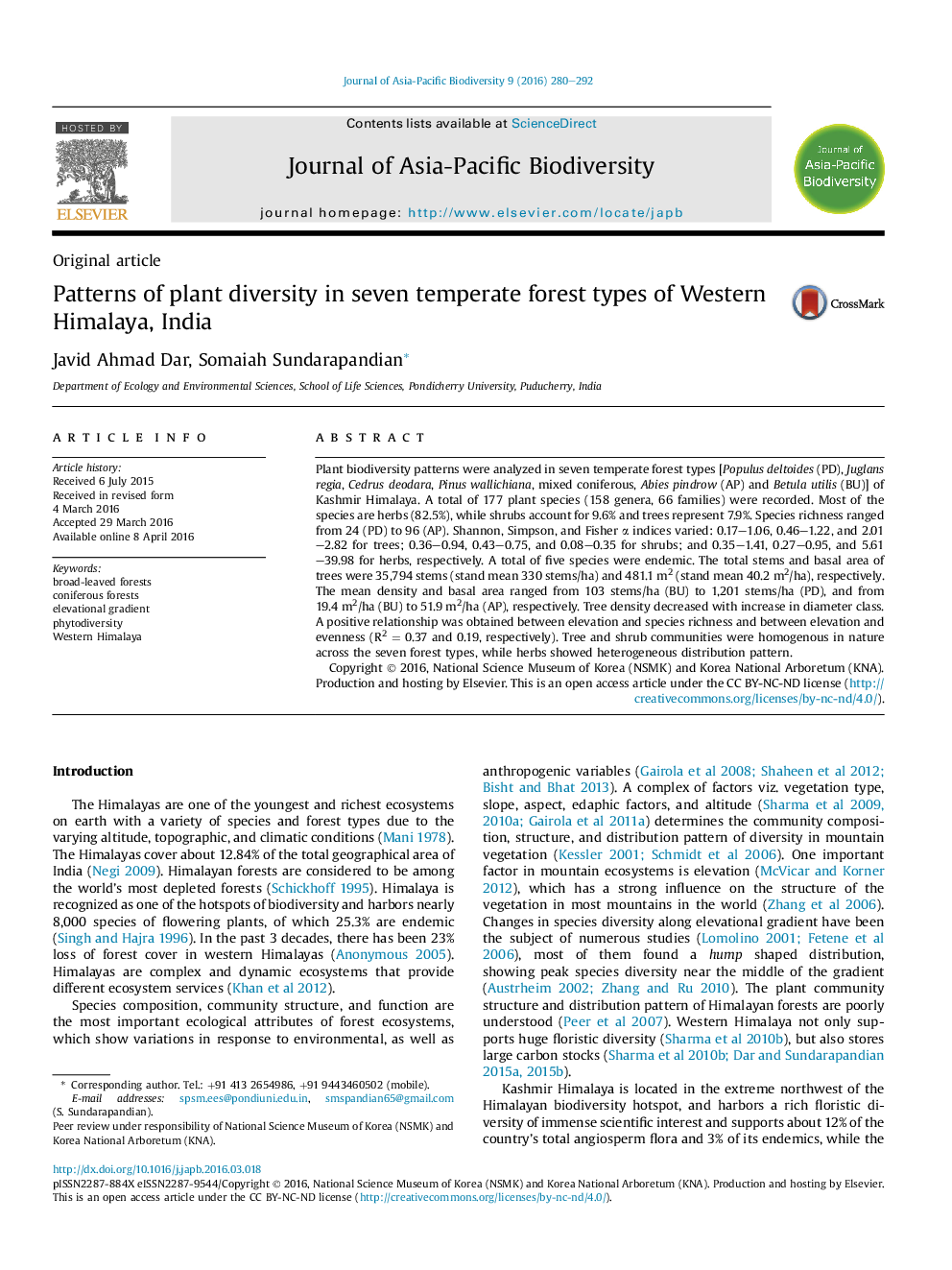| Article ID | Journal | Published Year | Pages | File Type |
|---|---|---|---|---|
| 4394923 | Journal of Asia-Pacific Biodiversity | 2016 | 13 Pages |
Plant biodiversity patterns were analyzed in seven temperate forest types [Populus deltoides (PD), Juglans regia, Cedrus deodara, Pinus wallichiana, mixed coniferous, Abies pindrow (AP) and Betula utilis (BU)] of Kashmir Himalaya. A total of 177 plant species (158 genera, 66 families) were recorded. Most of the species are herbs (82.5%), while shrubs account for 9.6% and trees represent 7.9%. Species richness ranged from 24 (PD) to 96 (AP). Shannon, Simpson, and Fisher α indices varied: 0.17–1.06, 0.46–1.22, and 2.01–2.82 for trees; 0.36–0.94, 0.43–0.75, and 0.08–0.35 for shrubs; and 0.35–1.41, 0.27–0.95, and 5.61–39.98 for herbs, respectively. A total of five species were endemic. The total stems and basal area of trees were 35,794 stems (stand mean 330 stems/ha) and 481.1 m2 (stand mean 40.2 m2/ha), respectively. The mean density and basal area ranged from 103 stems/ha (BU) to 1,201 stems/ha (PD), and from 19.4 m2/ha (BU) to 51.9 m2/ha (AP), respectively. Tree density decreased with increase in diameter class. A positive relationship was obtained between elevation and species richness and between elevation and evenness (R2 = 0.37 and 0.19, respectively). Tree and shrub communities were homogenous in nature across the seven forest types, while herbs showed heterogeneous distribution pattern.
